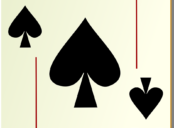Poker Hands Ranking: A Comprehensive Guide to Casino Games

Introduction:
Do you enjoy the thrill of casino games? If so, understanding the ranking of poker hands is essential. Whether you’re a novice or a seasoned gambler, knowing which poker hands are strong and which are weak can greatly improve your chances of success at the casino table. In this comprehensive guide, we’ll delve into the details of poker hands ranking, providing you with the knowledge you need to conquer the game.
Section 1: Poker Hands Ranking – A Key Aspect of Casino Games
Poker hands ranking refers to the hierarchy of hand combinations in the game of poker. As most casino enthusiasts know, poker is a card game played with a standard deck of 52 cards. Understanding the ranking of different hands allows players to assess the strength of their own hand relative to other players’ hands, enabling them to make informed decisions on whether to bet, fold, or call. This knowledge can make all the difference between winning and losing in poker.
Section 2: The Evolution of Poker Hands Ranking Throughout History

The ranking of poker hands has undergone significant changes over the years. Initially, the concept of hand rankings did not exist, and the game was played solely based on the card combinations. As the popularity of poker grew, players realized the need for a standardized ranking system to determine the strength of different hands.
In the 19th century, Jonathan H. Green introduced the concept of hand ranking in his book “An Exposure of the Arts and Miseries of Gambling.” Green’s hierarchy consisted of just three hands: flush, full, and fours. However, as the game evolved, so did the need for a more extensive ranking system.
In the early 20th century, the modern poker hand ranking system was established. This system, known as the “Standard English” ranking, introduced familiar hands such as straight, three of a kind, two pair, and one pair. The system also assigned distinct values to individual cards within a hand, determining the winner in case of a tie.
Over the years, variations of poker emerged, each with its own unique hand rankings. For instance, in the popular game of Texas Hold’em, players form their hands using a combination of community cards and their hole cards. This variation introduced new hand rankings, such as the royal flush and the straight flush.
Section 3: Understanding the Poker Hands Ranking System
Now, let’s take a closer look at the poker hands ranking system. Starting from the highest-ranking hand down to the lowest, here are the key categories of hands:
1. Royal Flus The ultimate hand in poker, consisting of the Ace, King, Queen, Jack, and Ten of the same suit. This hand is unbeatable.
2. Straight Flus Five cards of consecutive ranks, all belonging to the same suit. For example, 5, 6, 7, 8, and 9 of hearts.
3. Four of a Kind: Four cards of the same rank, accompanied by any fifth card. Having four Aces, for instance, would be a formidable hand.
4. Full House: A combination of three cards of one rank and two cards of another rank. For example, three Kings and two Queens.
5. Flus Five cards of the same suit, not necessarily in consecutive order.
6. Straight: Five consecutive cards of different suits. For instance, 4 of spades, 5 of hearts, 6 of diamonds, 7 of clubs, and 8 of diamonds.
7. Three of a Kind: Three cards of the same rank, accompanied by two unrelated cards.
8. Two Pair: Two pairs of cards with the same rank, plus any fifth card.
9. One Pair: Two cards of the same rank, accompanied by three unrelated cards.
10. High Card: When you don’t have any of the above combinations, the value of your hand depends on the highest-ranked card you hold.
Section 4: Increasing Your Chances of Winning with Poker Hands Ranking
To maximize your success in casino poker, keep the following tips in mind:
1. Memorize the hand rankings: Understanding the hierarchy of poker hands is crucial for making informed decisions during the game. Practice identifying different hands until it becomes second nature.
2. Pay attention to the community cards: In games like Texas Hold’em, the community cards can greatly impact the strength of your hand. Be aware of the possibilities they present and adjust your strategy accordingly.
3. Consider your opponents’ behavior: Observing your opponents’ betting patterns and reactions can provide valuable insights into the strength of their hands. Use this information to your advantage and adjust your own betting accordingly.
4. Practice selective aggression: While a strong hand is advantageous, aggressive betting can also help you bluff your opponents and win with weaker hands. Use a strategic approach to betting, weighing the potential risks and rewards.
5. Stay composed: Poker is a game of skill, strategy, and psychological prowess. Maintaining a calm and composed demeanor, regardless of the cards you hold, is key to bluffing successfully and outsmarting your opponents.
Conclusion:
Mastering the ranking of poker hands is crucial for any casino enthusiast looking to step up their game. By understanding the hierarchy of hands and how they’ve evolved over time, you can make informed decisions, seize opportunities, and increase your chances of success. Whether you’re a seasoned player or just starting out, use this comprehensive guide as your roadmap to conquering the thrilling world of poker. May luck be on your side!





















